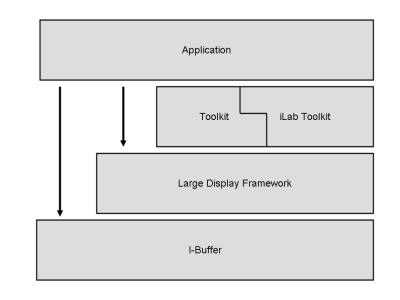Large Display Framework
The Large Display Framework (aka TableTop Framework, buffer framework) provides a foundation to build applications for tabletop displays. The focus is on enabling responsive interaction through a novel concept using buffer for interaction. It also provides an reusable architecture to integrate interaction metaphors into applications.
Contents
"Framework Developer" vs. "Application Developer"
There seems to be a bit of confusion as to what it means to "develop the framework." If you are developing an application that uses the framework, or are developing your own strategies using the framework (from scratch or based on the strategies in the toolkit layers), then chances are you are an application developer, rather than a framework developer.
Here's a diagram to help understand things a bit better:

From the LDF Overview document:
For a complete description of the different layers, see The LDF Overview Documentation
If, however, you are making fundamental changes to the framework or I-Buffer layers of the project, then chances are that you are a framework developer. I hope that helps clarify things!